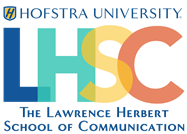By Scott Brinton
I was surrounded for nearly a week by thousands of protesters, any one of whom might have infected and potentially killed me, according to health officials, yet I was unfazed.
You might wonder why I was unconcerned that I might have caught Covid-19 while walking amid the river of Black Lives Matter demonstrators who streamed through Bellmore, Merrick and Freeport in June 2020, following the death of George Floyd at the hands of a Minneapolis police officer.
I just wasn’t. And I didn’t get Covid.
I covered the protests for the Bellmore Herald, Merrick Herald and Freeport Herald, diving right in. These were historic demonstrations taking place down the street from my Merrick home. I had to experience and record them, the insistent government warnings against attending mass protests be damned. This was my job. This was my calling.
On Day Two of the demonstrations, June 3, I shot a 15-second video of a 7-year-old girl, Wynta-Amor Rogers, chanting, “No justice, no peace!” as she marched alongside her mother, Lakyia Jackson. Within hours, the video went viral on Twitter (now X), garnering more than a million views by midnight and 23.5 million within days.
Based on the hundreds of online comments that I read, for many Wynta-Amor represented a measure of hope for better days in the most contentious presidential election year in decades (perhaps ever). This dark period was racked not only by the global pandemic, but also by worldwide joblessness and financial turmoil, leading to a suffocating sense of helplessness and mass psychic malaise.
Floyd’s murder by a police officer who knelt on his neck for 8 minutes, 46 seconds transformed an already growing unrest into a social and political movement that united millions of Americans seeking peace and justice for Black and Brown people around the country. Wynta-Amor served as a powerful symbol of fearlessness, a beacon on whom people could project their desires and aspirations for a more equitable and inclusive society.
Adult Black Lives Matter protesters knew precisely whom they were fighting for: millions of children like Wynta-Amor.
She became a charismatic speaker at BLM marches. She was immortalized in poems, paintings and building-size murals.
The video of her was shared thousands of times on social media, and played by news outlets around the globe and at the Democratic National Convention in Milwaukee. Google even included it in its Year in Search, the final footage in a long line of remarkable viral videos. I can think of few years in my lifetime as terrifying, heart-wrenching and exhilarating as 2020.
I came away from the experience feeling enthused about the media’s ability to telegraph a message that aided in a movement to effect social change, to improve society. Four years later, I am less sanguine, though still hopeful.
After 28 years at the Herald, I left the newspaper group in early 2022 to teach journalism full-time at Hofstra University. Almost immediately, I started researching the effect of media coverage on communities of color, in particular at the hyperlocal level. Fellow Hofstra professors Mario Murillo and Aashish Kumar and I interviewed 40 leaders of community-based organizations in Freeport, Elmont, Hempstead, Roosevelt, Uniondale and Westbury, asking about their perceptions of media reporting on their neighborhoods. The adjective most often used to describe the coverage: negative.
Crime, the leaders repeatedly said, dominated news reports on their neighborhoods, with little positive coverage and virtually no reporting on critical issues besides education. A news audit of 469 stories on their communities from January to June 2022 largely supported their assertions, with two exceptions: the Franklin Square-Elmont Herald and Freeport Herald.
In these community publications, crime comprised less than 10 percent of coverage, whereas it made up anywhere from 25 to 80 percent of reporting in regional news outlets. Fingers crossed, we are set to release the study’s complete findings this month in a paper titled “The Suburban News Desert: Where Communities of Color are Starved for Critical Information Amid Crime-centered Coverage.”
I came away from the experience feeling enthused about the media’s ability to telegraph a message that aided in a movement to effect social change, to improve society. Four years later, I am less sanguine, though still hopeful.
We know this from the social sciences: According to cultivation theory, the more people are exposed to violence in the media, the more they believe the world is dangerous, even if they live in peaceful places.
The more people read or view reports on crime in communities of color, without positive coverage to provide context, the more they believe these neighborhoods to be crime-ridden and deviant, even though they may in fact be largely safe and harmonious communities in which to live, work and raise a family.
This is where community newspapers come in. They cover crime, yes, but they also report regularly on the good stuff — neighborhood block parties, volunteer efforts, graduations, marriages and births, along with the crucial issues that matter most to people.
Having made my career as a community journalist, I believed in community media before I became a professor. Having studied the media as an academic researcher, I appreciate, more than ever, the need for community news outlets, particularly in neighborhoods of color.
Scott Brinton is an assistant professor of journalism, media studies and public relations at Hofstra University’s Lawrence Herbert School of Communication. Comments? scott.brinton@hofstra.edu.








